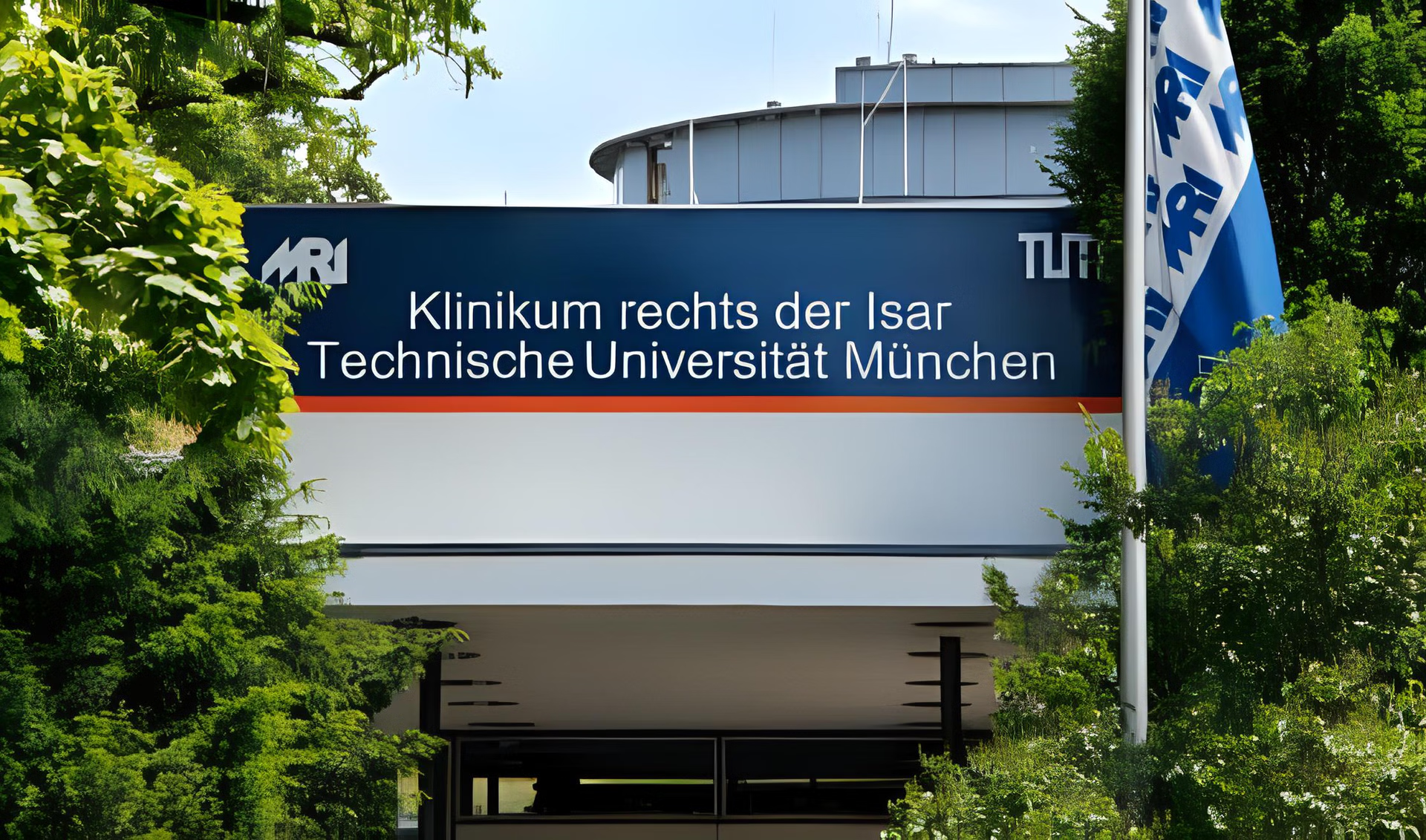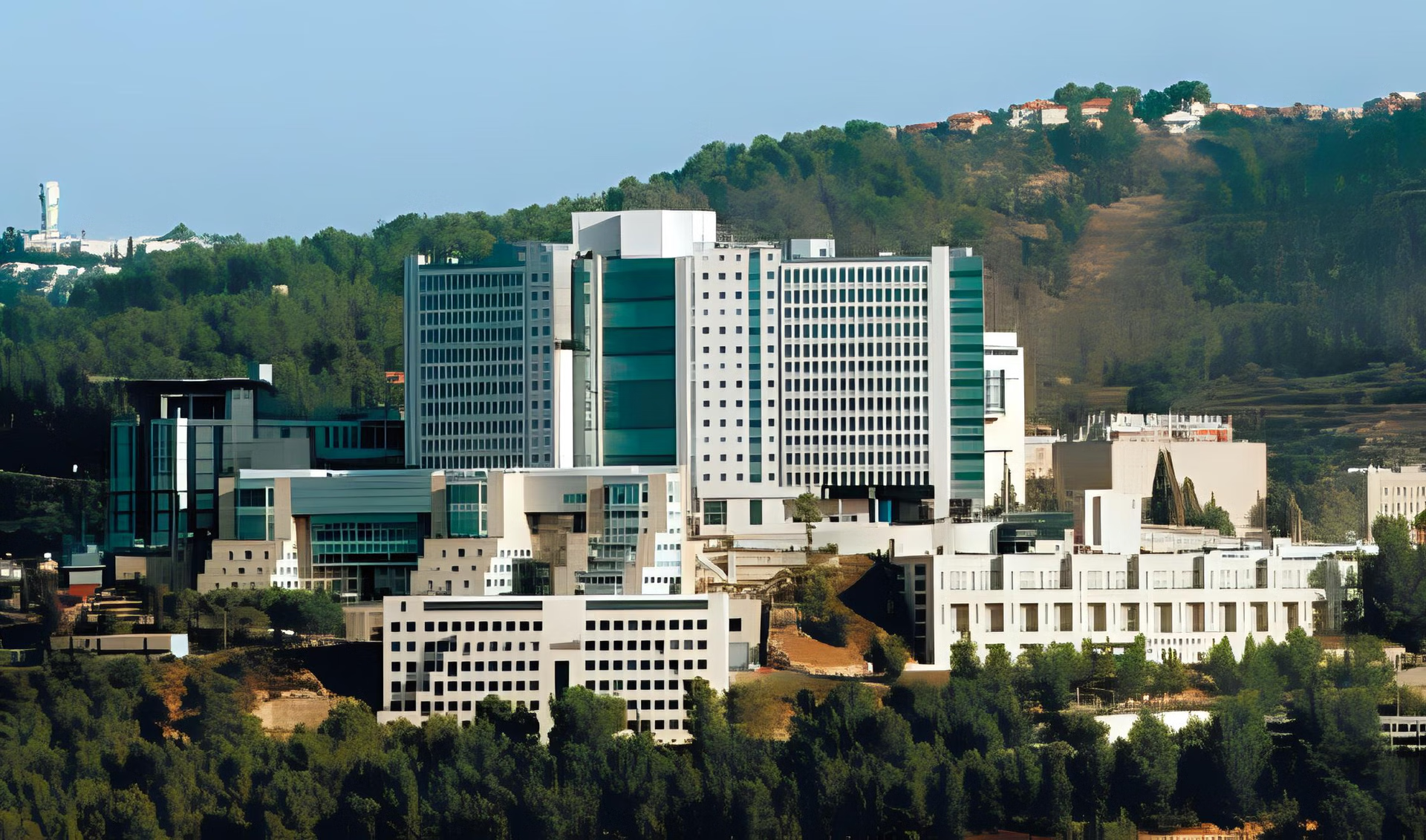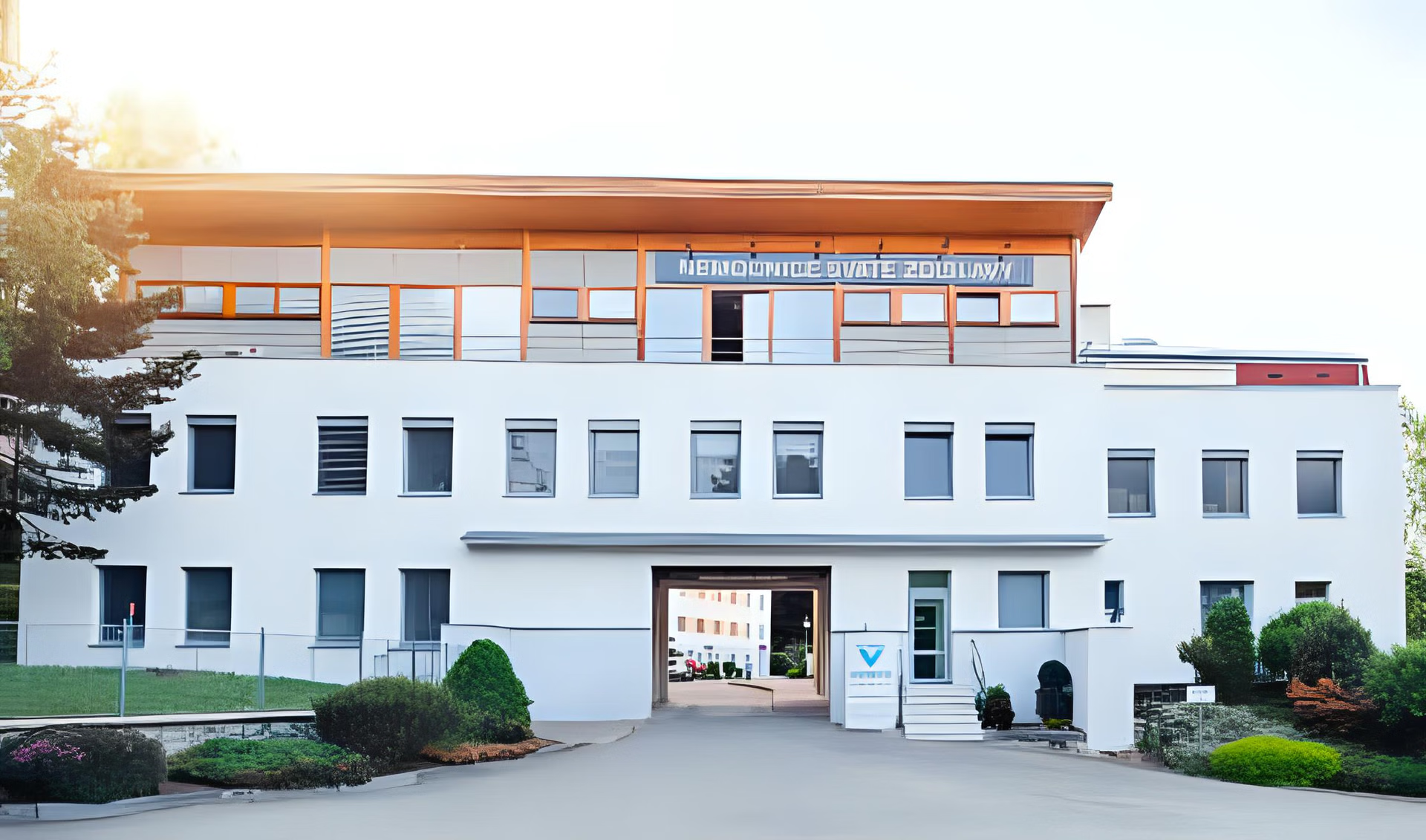Kidney Cancer Guide

Kidney cancer affects 1 in 46 men. Women have a 1.03% (1 in 80) risk.
Smoking increases the risk of kidney malignancy in men by 50%.
Localized kidney cancer had a 5-year survival rate of 93%.
64 y.o. is the average age when malignant kidney neoplasm is diagnosed.
 Some info about the kidneys
Some info about the kidneys
The kidneys are two organs on either side of the spine in the lower back. They are in charge of filtering waste and extra fluid out of the blood, which is then thrown out in the urine. About 200 liters of blood pass through these organs daily, and 2 liters of urine are made. The kidneys also help keep the balance of electrolytes, control blood pressure, and make erythrocytes, which are red blood cells. They also make hormones that help keep the body's metabolism in check and keep the bones healthy.
Each kidney is about the size of a fist and comprises about a million nephrons, which are functional units. The nephrons filter the blood and help eliminate waste and extra fluids. The urine is what leaves the body.
 What is kidney cancer?
What is kidney cancer?
It is a disease where the cells in the kidney start to grow uncontrollably, forming a tumor. Cancer can begin in one or both kidneys, and as it grows, it can spread to other body parts. It usually starts as a small, harmless growth but can become dangerous over time.
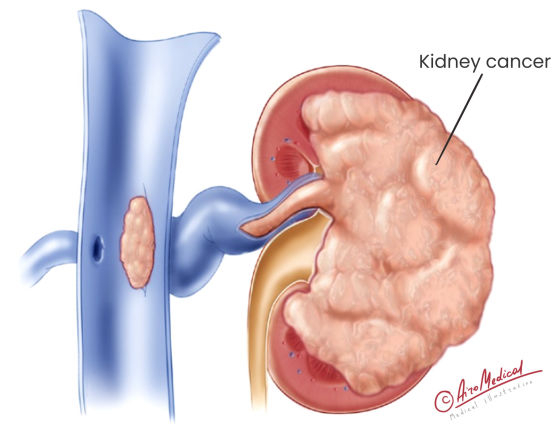 Most people with renal cancer get one of the following:
Most people with renal cancer get one of the following:
- Kidney carcinoma (KC) is adults' most common type, making up about 85% of all cases. It grows in the kidney's filtration system, which comprises small tubes called renal canals.
- Urothelial carcinoma, or transitional cell carcinoma, makes up 5% to 10% of all cases of cancer found in adults. It starts in the renal pelvis, the part of the kidney where urine accumulates before it goes to the bladder.
- Sarcoma is a rare type that starts in soft kidney tissue, a layer of connective tissue or the fat around it.
- Wilms tumor is the most common form in children. About 1% of kidney cancers are caused by it.
- Lymphoma is linked to more lymph nodes in various body areas, including the abdomen.
Malignancy in kidneys affects many people; it is twice as common in men than women and mainly affects adults between 60-70 years old. It is not very common in young people. Recently, the number of patients has been increasing by about 1% yearly.
 What causes kidney cancer
What causes kidney cancer
There are several known risk factors, including:
- Smoking: Smokers have a twice higher risk than non-smokers.
- Obesity: Being overweight or obese makes kidney cancer more likely.
- High blood pressure (hypertension): People with high blood pressure have a higher risk of developing a kidney tumor.
- Family history: If a close relative (such as a parent or sibling) has had kidney cancer, your risk of developing the disease increases.
- Gender: Men are more likely to develop such cancer than women.
- Age: The risk increases as people age. The highest rate is in the age of 60-70.
- Exposure to certain chemicals and toxins, like cadmium and trichloroethylene, has been linked to a higher chance of.
- Some inherited genetic disorders, such as von Hippel-Lindau disease and hereditary papillary renal cell carcinoma, can provoke the risk.
It's important to note that having one or more of these risk factors does not necessarily mean that you will develop a tumor. Many people with it have no known risk factors. However, being aware of these risk factors can help you make lifestyle and health choices that may lower your risk of developing the disease.
Can we reduce the risk of kidney cancer?
Everyone can take several steps:
- Smoking is a significant risk factor, so quitting can significantly reduce your risk of developing oncology disease.
- Maintain a healthy weight: Being overweight or obese increases the risk, so a healthy diet and exercise can help lower the risk.
- Control the blood pressure: High blood pressure is a significant risk factor, so lifestyle changes or medication can help eliminate the risk.
- Avoid exposure to chemicals and toxins: If you work in an industry where you may be exposed to chemicals and toxins, that increases the risk. Also, take steps to reduce your exposure as much as possible.
- Get regular check-ups: Regular check-ups can help detect signs of kidney cancer and treat it in its beginning stages. It is more likely to do it successfully.
- A diet of fruits, vegetables, and whole grains can lower the risk.
It's important to note that these steps may not guarantee that you will not develop neoplasm in your kidneys, but they can help decrease your risk. Suppose you have a family history of it or other risk factors. In that case, talk to your doctor about the risk and the steps you can take to reduce it.
 What are the kidney cancer symptoms?
What are the kidney cancer symptoms?
Symptoms may include blood in the urine (Hematuria). It's a common sign of kidney tumors. Other conditions can also cause it. Blood in the urine is a reason to see the doctor ASAP.
Not all cases of malignancy will have blood in the urine, and not all cases of hematuria are caused by cancer. However, hematuria should always be investigated to rule out any severe underlying conditions.
Other early symptoms of kidney cancer that are warning can be subtle and may not be noticed until cancer has progressed. Some of them include the following:
- A lump or mass in the abdomen or side;
- Back or pelvic pain;
- Loss of appetite;
- Fatigue;
- Anemia (low red blood cell count);
- Unexpected weight loss.
However, many people have no symptoms in the early stages of the disease. If you are experiencing any of these symptoms, you must see a doctor for a proper diagnosis.
Other symptoms of kidney cancer in males are similar to those in females and may include the following:
- A persistent fever that is not caused by an infection;
- Night sweats;
- Abdominal swelling;
- A mass or lump felt on the side or lower back;
- Constant pain in the side or lower back.
It's important to note that these symptoms can also be caused by other conditions and do not always indicate kidney cancer. If you have any unusual symptoms or family history, visit the doctor ASAP. Our partner clinics can perform the diagnostic test listed below.
 Diagnostic tests
Diagnostic tests
Worth mentioning that some tests might not be specific to renal cancer and can also be used to diagnose other conditions. Your doctor will use the test results, your medical history, symptoms, and physical examination to diagnose.
In addition to the physical exam, the following tests will be used:
- Imaging tests such as CT scans, MRIs, and ultrasounds can help identify kidney tumors and determine their size and location.
- A biopsy is a procedure in which a small tissue sample is taken from the tumor. The pathologist examines it under a microscope to confirm or delay a cancer diagnosis.
- Blood tests can be used to check for high levels of certain substances often present in people with kidney tumors, such as blood creatinine and blood urea nitrogen (BUN).
- Urine tests can look for blood or other abnormal cells in the urine, which can signify kidney cancer.
- Cystoscopy and nephroureteroscopy use a thin tube with a light and a lens to see inside the bladder and ureters, lifting into the kidney.
- Angiography is an imaging test that uses an X-ray and a special dye to see blood vessels in and around a tumor.
Additional diagnostic methods include:
- Laparoscopy uses a small camera and instruments to examine the inside of the abdomen and remove a small tissue sample for biopsy.
- Excretory urography: This type of X-ray creates images of the kidneys, ureters, and bladder.
- An intravenous pyelogram (IVP) is an X-ray of the urinary tract after injecting a special dye into a vein.
- The renal scan uses a small amount of radioactive material and a special camera to create images of the kidneys.
A combination of these tests is sometimes needed for a proper diagnosis. Your doctor will recommend the best diagnostic methods depending on your case, medical history, and the stage of the disease.
For kidney cancer, a second opinion is a meeting with another doctor or team of doctors who will look at your medical records, imaging studies, and pathology results. They may also do more tests or exams to confirm your diagnosis or learn more about your condition and treatment options. If you have questions about your diagnosis or plan for treatment for cancer of the kidney, or if you are thinking about a major surgery or other invasive procedure, it is essential to get a second opinion.
Stages of kidney cancer
Most of the time, there are four stages:
- Stage 1: The cancer is only in the kidney and hasn't spread to other body parts.
- Stage 2: Cancer has spread outside the kidney but not extended to other organs or lymph nodes.
- Stage 3: Cancer has spread to one or more nearby lymph nodes or organs but not to distant body parts.
- Stage 4: Cancer has spread to distant body parts, like the lungs, bones, or brain.
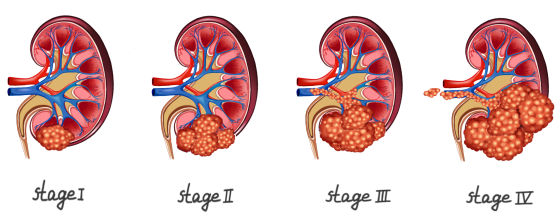
It's important to remember that cancer's stage is a way to describe how big it is and how fast kidney cancer spreads. The speed at which it applies can vary widely and depends on the specific cancer type, its stage, and the patient's overall health.
Kidney cancer typically grows slowly and may not cause symptoms for many years. However, some types of kidney malignancy can grow more quickly and aggressively.
The rate of spread of kidney cancer can also depend on the cancer stage at the time of diagnosis. If the cancer is caught at an early stage, before it has had a chance to extend to other organs of lymph nodes, it is more likely to be treated successfully. However, it is more challenging to treat if cancer is not caught early.
Concerning the 5-year survival rate for stage 1, it is 93%; for stage 2, about 72%; for stage 3, it is 47%; and for stage 4, it is 12%.
It can help doctors decide how to treat a patient and predict the prognosis. But not every cancer patient in the same stage will have the same result. A person's overall health, how well they respond to treatment, and their genes can also play a part.
Where to go to treat kidney cancer?
 Conventional treatment for kidney cancer
Conventional treatment for kidney cancer
Surgery is the most common way to treat kidney cancer. It is usually recommended for tumors close to the kidney (tumors not extended to other body parts). Here are some more details:
- Open surgery for kidney cancer, also known as a nephrectomy, involves making a large incision in the patient's abdomen or side to remove the affected kidney. This surgery allows for a direct view of the kidney and surrounding tissue. It is often used for larger tumors or patients with other health conditions that make them poor candidates for minimally invasive surgery.
- Laparoscopic surgery as a treatment of kidney cancer, also known as minimally invasive kidney (part) removal, involves making small incisions in the patient's abdomen and using specialized instruments to remove the affected kidney. This type of surgery is typically less invasive than open surgery. It may result in less pain, faster recovery, and fewer complications. It is often used for smaller tumors or otherwise healthy patients.
Both surgical approaches have advantages and disadvantages. The choice of surgery will depend on the individual case, the size and stage of the tumor, and the patient's overall health.
Due to the study, the rate of complications after laparoscopic kidney surgery was 19.5%, which was pretty low then after open surgery, which was 47.8%.
There are two types of kidney cancer surgeries:
- Nephrectomies, which remove the whole kidney that is sick, is the most common surgery.
- In some cases, a partial nephrectomy may be done. The surgeon will remove only the part of the kidney with the tumor, and the resting tissue will remain undamaged.
Radiation therapy: High-energy X-rays are used in radiation therapy to kill cancerous cells. The most widely used radiation therapy is external beam radiation therapy. Radiation therapy is usually used to ease cancer symptoms in treatment for cancer kidney metastasis like pain, bleeding, or issues created by cancer spreading to bones or the brain. It is also used as pre- and postoperative therapy or metastatic kidney cancer treatment. In that study, 83% of patients who got conventional radiotherapy felt less pain in the affected area.
Chemotherapy is rarely used in kidney tumor treatment. Medications can harm healthy kidney cells and don't target cancer ones. When neoplasm spreads, chemotherapy may be utilized alongside targeted therapy, immunotherapy, or radiation therapy. Chemotherapy after surgery may prevent cancer recurrence.
Targeted therapy is when drugs aim for molecules in cancerous cells that help them grow and divide. These drugs can help stop the growth of tumors or slow them down.
Immunotherapy is a relatively new way to treat cancer that helps the body's immune system fight cancer cells. It uses medicines to support the immune system in finding malignant cells and fighting them. People who get immunotherapy go for long periods without getting worse. The above signifies that cancer did not expand over a particular time. As reported, 42% of patients have positive effects, and 9% have a complete response. The 18-month survival rate was 75%.
It's important to remember that treatment choice will depend on the stage and grade of cancer and the patient's overall health and personal preferences. In some cases, oncologists may use different methods together.
What hospitals are suitable for cancer in the kidney
 New ways to treat kidney cancer
New ways to treat kidney cancer
How kidney cancer is treated today differs from just ten years ago. The American Cancer Society says that new scientific discoveries and the development of new treatments for kidney cancer have changed how it is cured.
Surgical treatment (robot-assisted kidney surgery DaVinci): The surgeon makes several minor cuts in the abdomen instead of one large amount, like in traditional surgery. The equipment is then put into these minor cuts by the surgeon. The doctor uses tools made by robots to do surgery. Most of the time, this kind of surgery is less painful. At five years, recurrence-free survival was after the robotic surgery 98.9%, and cancer-specific survival was said to be as high as 99%.
Renal artery embolization (RAE) is a procedure in which the artery in the kidney that supplies the tumor is blocked. The doctor puts a thin tube called a catheter into a large blood vessel in the groin to stop blood from going to the kidney tumor. It will shrink if the kidney tumor doesn't get food and oxygen. When the renal artery was blocked before surgery, survival rates went up. In stage T3, they went from 44 to 60%, and in stage T4, they went from 7 to 50%.
Transarterial chemoembolization (TACE) is used to treat metastases. Chemotherapeutic drugs block the blood supply to the tumor, which keeps the chemotherapy inside the cancer. When chemo medications are put right into the tumor, they target the blood vessels that feed cancer.
Transarterial chemoperfusion (TACP) is used to treat metastases. Through the blood vessels, antitumor drugs are injected into the kidney tumor. It ensures that the patient stays longer and is exposed to a higher drug concentration in the tumor.
Ablation (RFA, MWA, Ethanol): An electric current, heat, or ethanol is sent to the kidney tumor through a needle or probe. It causes the kidneys to get smaller and break down.
NanoKnife is used to treat kidney cancer using electrical pulses with a high frequency to make small holes in cancer cells. It causes the cells to break apart and die. This treatment is minimally invasive because a needle-like probe goes through the skin and into the tumor. Irreversible Electroporation (IRE) is a type of electrical current used by the NanoKnife system to make electrical pulses. It is thought to be a good option for people with small, localized kidney tumors who aren't good candidates for surgery or for whom surgery isn't an option, such as those with kidney cancer already in an advanced stage. Patients with RCC had an 81.0% chance of living five years without a local recurrence. Metastasis-free survival at five years was 97.1%, and overall survival at five years was 90.6%. 100% of patients lived five years.
Proton therapy: cancer cells are destroyed by high-energy X-rays. Proton therapy treats localized and metastatic kidney cancer. It can replace photon-based radiation therapy or surgery for localized form. It also treats recurring tumors. Advanced stages can be treated with proton therapy and targeted or immunotherapy. Researchers found that 46% of people with proton therapy were controlling their kidney cancer after three years. After three years, 65% of the people who had proton therapy were still alive.
A dendritic cell-based kidney cancer vaccine uses dendritic cells, immune cells that deliver cancer antigens to the immune system, to assist the body in recognizing and fighting cancer cells. Exposing patient blood dendritic cells to cancer antigens creates the vaccine. Dendritic cells are reinjected into the patient. They can help the immune system fight cancer cells and improve kidney cancer survival. However, this cancer treatment is currently being researched.
CyberKnife and Gamma Knife are both forms of stereotactic radiosurgery, minimally invasive techniques that use high-dose radiation to treat tumors with high precision. It is not a primary treatment for kidney cancer, as surgery or radiation therapy. However, they may be an alternative treatment for kidney cancer for patients who are not candidates for surgery. Or for whom surgery is not an option, such as those with advanced-stage kidney cancer. Doctors use Cyberknife and GammaKnife to target small, well-defined tumors with high accuracy while minimizing damage to surrounding healthy tissue. Some studies reported about 90% success in controlling brain metastasis of renal cell carcinoma.
Immunotherapy with tumor-infiltrating lymphocytes (TIL) is being studied to treat kidney cancer. TIL therapy involves taking a piece of the patient's tumor, growing TILs (a type of white blood cell) in a lab, and then giving the TILs back to the patient through an IV. The TILs in the body can help the immune system find cancer cells and attack them. TIL therapy is still being researched, so it has yet to be a standard way.
CAR T-cell therapy is a type of immunotherapy that involves genetically engineering a patient's T-cells (a type of white blood cell) to express a chimeric antigen receptor (CAR) that targets a specific protein found on the surface of cancer cells. It allows the T-cells to recognize and attack cancer cells. CAR T-cell therapy is being studied as a potential treatment option for kidney cancer. However, it is still in the research phase and is not available as a conventional treatment option.
The treating team can use one or more methods and procedures, both old and new, to help the patient get better.
Who treats kidney cancer the best?
 Stats and predictions
Stats and predictions
Almost 17 million people with kidney cancer have survived in the U.S., so it is crucial to help these people with active treatment. Survival prediction is essential because it lets us look at the future of beating the disease through statistics.
Based on data from the National Cancer Institute's database from 2011 to 2017, the American Cancer Society gives the following information. 93% of people with a malignant tumor that hasn't spread outside the organ will still be alive after five years. When cancer spreads outside of the kidney to lymph nodes nearby, the survival rate is about 71% for regional disease. When cancer spreads to other parts of the body (metastatic form), only 14% of people will still be alive after five years.
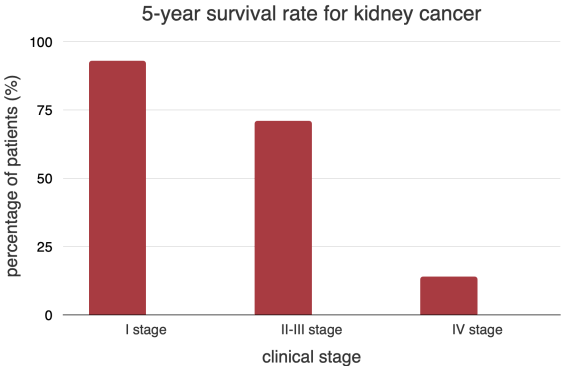
At AiroMedical, we understand the importance of providing patients with kidney cancer with the best possible treatment options. We work to identify the most advanced and effective treatment programs, clinics, and doctors worldwide. By reviewing official reports and data, we can make informed decisions about the best options for each patient. Our team is dedicated to helping patients find the best treatment for their specific condition without being limited by location or hospital. We also help with coordinating medical travel, providing medical visa support, and accommodation and transportation for patients and their companions. We strive to provide care and support throughout their treatment journey.
Don't hesitate to contact us to learn more about how we can help you or your loved one with a kidney cancer diagnosis.
References:
- Survival Rates for Kidney Cancer. American Cancer Society. https://www.cancer.org/cancer/kidney-cancer/detection-diagnosis-staging/survival-rates.html
- Radiation Therapy for Kidney Cancer. American Cancer Society. https://www.cancer.org/cancer/kidney-cancer/treating/radiation.html
- Misher Courtney, Radiation Therapy for Kidney Cancer, Oncolink cancer blog, Last Reviewed: February 1, 2022
- Arterial embolization for kidney cancer. Canadian Cancer Society. https://cancer.ca/en/cancer-information/cancer-types/kidney/treatment/arterial-embolization
- Kidney Cancer. National Kidney Foundation Inc. https://www.kidney.org/
- Living with advanced kidney cancer. Cancer Research UK. https://www.cancerresearchuk.org/about-cancer/kidney-cancer/advanced/living
- Lee Katherine. 6 Strategies for Thriving as a Kidney Cancer Survivor. Everyday Health, Reviewed January 26, 2021, https://www.everydayhealth.com/kidney-cancer/strategies-for-thriving-as-a-kidney-cancer-survivor/.
- Kidney Cancer: Risk Factors and Prevention. American Society of Clinical Oncology (ASCO). Approved 10\21. https://www.cancer.net/cancer-types/kidney-cancer/risk-factors-and-prevention
- Treatment - Kidney cancer. National Health Service England (NHS). Last reviewed 03 December 2022. https://www.nhs.uk/conditions/kidney-cancer/treatment/
